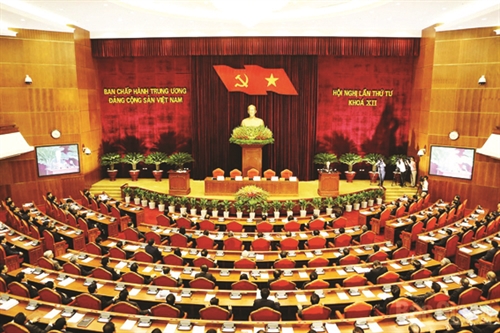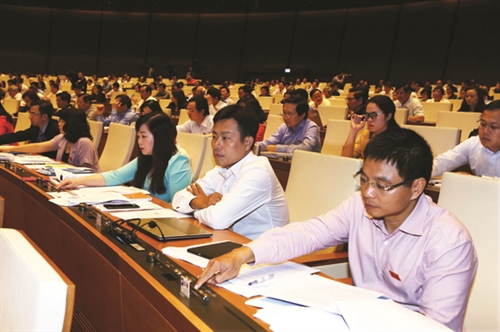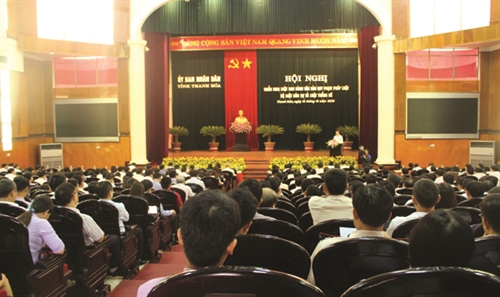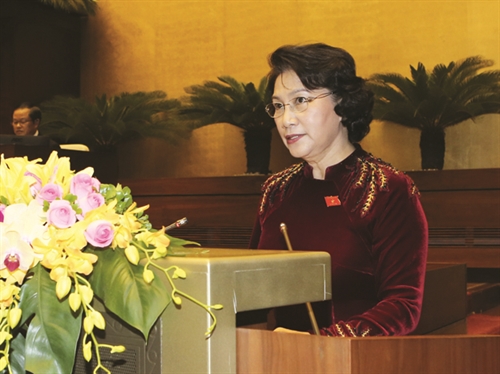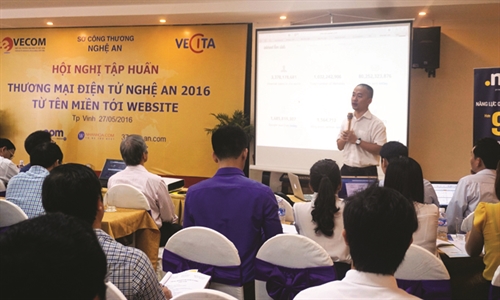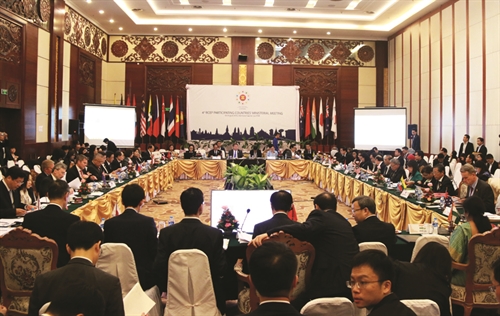Nguyen Xuan Quang, LL.D., and Tran Ngoc Tuan
Ho Chi Minh City University of Law
It can be said that ownership is a central institution of civil legislation, serving as the basis for formulating other institutions like those on contract or inheritance.
After 10 years’ enforcement, the 2005 Civil Code (the 2005 Code) of Vietnam has become impractical in many aspects, especially when the country enters the period of intensive and extensive integration into the world economy. Particularly, the Code’s provisions on ownership have revealed many inadequacies, such as providing the protection of rights of owners only but not rights of other subjects in the exploitation of property and establishment of rights over property, or stipulating forms of ownership without specific criteria, causing inconsistencies in their implementation. The new Civil Code of 2015 (the 2015 Code) has made many new provisions to overcome these inadequacies.
Ownership
The 2015 Code has restructured the provisions on ownership, incorporating the provisions on property in Part One “General Provisions” instead of Part Two as in the 2005 Code. This is a reasonable change because property is the subject matter of not only ownership rights but also other institutions on contract or inheritance. At the same time, the Code has grouped the provisions on ownership rights and other rights over property in a separate part, thus clarifying the rights of non-owners to exploit and use the property as well as to sue infringements upon these rights.
Possession
The 2015 Code defines possession in Article 179 as a subject’s act of holding and controlling a property directly or indirectly like a subject that has rights over property. Compared to the 2005 Code, this definition has some changes:
First, the word “manage” is replaced with the word “control”. This change extends the scope of possession as the right to control is understood as the right to control and decide on a property. Second, the Code adds the phrase: “… directly or indirectly like a subject that has rights over property.” “A subject that has rights over property” ex officio refers to the owner and a person having other rights over a property. However, there remains a question as to whether a lessee or borrower who is entitled to use a property can be regarded as a subject having rights over the property. It is suggested that this definition (subject that has rights over property) should be understood only within the frame of Part Two “Ownership rights and other rights over property” of the 2015 Code.
The 2015 Code affirms that possession is a legal status but not just the right to possession as stated in the 2005 Code. This means that a person who is possessing a property may be its owner or another organization or individual. The possessor of a property is presumed to be bona fide and therefore is entitled to exploit and use the property and enjoy fruits and yields from the property. Anyone who reckons that the possessor is mala fide must give a proof. If a proof cannot be given, it is possible to presume conversely that the current possessor is bona fide. This novel provision not only helps better protect the current possessor of a property, making him feel at ease when exploiting and using the property, but also transfers the obligation to prove the mala fide possession to the protesting or disputing person. If another person infringes upon the possession, the possessor may ask this person to stop the infringing act, restore the initial conditions of the property, return the property and pay compensation or request the court or another competent state body to compel this person to do so.
Right to disposition
Compared to the 2005 Code, the owner’s right to disposition is broader under the 2015 Code. Specifically, a subject’s right to disposition covers acts of selling, exchanging, donating, lending, bequeathing, relinquishing the ownership rights over, consuming, destroying, or otherwise disposing of, the property. The two new acts here are consuming and destroying property, which are common in civil life. Consumption, a legal act that decides the “fate” of a property, helps boost production and business activities. The 2015 Code also states that the owner’s right to disposition is restricted only in cases prescribed by a law, but not a sub-law like a decree or circular. This aims to prevent arbitrary restriction of this right.[1]
Forms of ownership
The 2015 Code’s provisions on forms of ownership are re-arranged and re-designed based on different ways of exercising rights through three acknowledged forms of ownership: ownership by the entire people, private ownership and common ownership. The 2005 Code defines six forms of ownership, namely state ownership, collective ownership, private ownership, common ownership, ownership by political organizations or socio-political organizations, and ownership by socio-political-professional organizations, social organizations or socio-professional organizations. This classification not only fails to clearly reflect the nature of forms of ownership but also contradicts the Constitution. Therefore, state ownership provided in the 2005 Code is replaced with ownership by the entire people in the 2015 Code to conform with the Constitution.
Meanwhile, private ownership, collective ownership, and ownership by various organizations under the 2005 Code are consolidated into private ownership under the 2015 Code, which is defined as ownership by an individual or a legal person[2]. Such consolidation truly reflects the substance of this kind of ownership over property, allowing the property owner to decide by himself on the possession, use and disposition of the property to meet his daily-life, consumption or production and business needs or for other purposes not contrary to law.
Regarding common ownership, the 2015 Code adds provisions on ownership by family members. It also distinguishes common ownership over immoveable property from that over moveable property so as to determine corollaries when one of the co-owners abandons his ownership rights or dies without an heir[3]. This provision is expected to be a legal basis for thorough settlement of every specific case involving different kinds of property[4].
The 2015 Code’s provisions on ownership rights and other rights over property are designed in a manner to distinguish the actual relation of the possessor and a property and the relation between the owner and subjects having other rights over such property when they have interests from the same property. They also differentiate the time a transaction takes effect from the time of transfer of rights and the time a security measure takes counter effect for a third party. These provisions aim to enable property being a good to be circulated continuously in various forms and on different scales and to have its value maximized by its owner as well as non-owners.
Other rights over property
Besides inheriting, mutatis mutandis, current regulations on ownership rights, the 2015 Code adds the institutions on other rights over property, i.e., rights of subjects directly holding and controlling property owned by others. Other rights over property, including easement, usufruct, and right of superficies, will remain valid even in case ownership rights over the property is transferred, unless otherwise prescribed by the 2015 Code or other relevant laws.
Owners are entitled to perform all acts at their own will with respect to their property on the conditions that such acts neither contravene the law nor harm or affect the State’s interests, public interests or lawful rights and interests of other persons. Meanwhile, holders of other rights over a property may perform all acts within the scope of the rights established in the 2015 Code and other relevant laws but must not harm or affect national interests, public interests or lawful rights and interests of the owner of the property or of others. Like property owners, holders of other rights over a property will have their rights protected and restricted within the scope of such rights.
Unlike the 2005 Code under which easement is established based on the relation between two subjects being the owner of the property and related persons in the use of such property, the 2015 Code provides this right on the basis of the relation between the owners of two related estates. Accordingly, easement can be exercised over a real estate (servient estate) in order to facilitate the exploitation of another real estate (dominant estate). Easement will exist as long as the related real estates exist and the demand to enjoy such right remains, regardless of either or both of the dominant estate and servient estate have been transferred to other subjects.
Easement will be established on grounds of natural location or under law, agreements or testaments, bound to all natural and legal persons, and transferred when the concerned real estate is transferred, unless otherwise provided for by relevant laws. Easement will be exercised based on agreements between involved parties. In case the parties have no agreements, the exercise of the right will be based on the reasonable demand for exploitation of the dominant estate and the use purposes of both the dominant estate and servient estate. The owner of the dominant estate may not abuse his right over the servient estate, whereas the owner of the servient estate may not perform any acts that restrict or cause difficulties to the exercise of the right.
The second among other rights over property recognized in the 2015 Code is usufruct, which is defined as the right of a subject to use and enjoy fruits and yields from a property of another subject in a given period of time.
Usufruct holders may be natural or legal persons and the subject matters of usufruct may be properties of any type prescribed in the 2015 Code. Usufruct may be established under law, an agreement or a testament. The time of establishment of usufruct is the time the property being the subject matter of usufruct is handed over, unless otherwise agreed or provided for by relevant laws. From this time on, this right becomes valid for all natural and legal persons, unless otherwise prescribed by relevant laws. The term of usufruct will be agreed by involved parties or provided by law and may last until the first usufruct holder dies or no longer exists. However, in case the first usufruct holder is an institution, the usufruct must not last for more than 30 years. The usufruct holder may exploit, use and enjoy fruits and yields from the property being the subject matter of the usufruct or permit others to do so. The usufruct holder may also lease the usufruct. In addition, the usufruct holder will not be required to bear expenses for repairing the property so as to prevent its deterioration to become unusable or valueless.
The owner of a property is entitled to dispose of the property but may neither change the usufruct already established over such property nor obstruct, commit acts that cause difficulties to, and infringe upon the lawful rights and interests of, the usufruct holder. In addition, the owner will be obliged to repair the property so as to ensure that the property will not be deteriorated to become unusable or valueless. On the other hand, if the usufruct holder seriously violates his obligations, the owner may request the court to deprive of the usufruct. Usufruct will terminate when it is so agreed by involved parties or ruled by the court or prescribed by law; the term of usufruct expires; the usufruct holder becomes the owner of the property subject to usufruct; the usufruct holder waives or fails to exercise usufruct within the law-prescribed time limit; or the subject matter of the usufruct no longer exists. Once usufruct terminates, the property subject to usufruct must be returned to its owner, unless otherwise agreed upon by involved parties or prescribed by law.
Compared to use rights, usufruct has a broader connotation quite close to ownership rights as it allows its holders to directly use or lease such property like property owners. With these provisions on usufruct, the 2015 Code shows the respect for the subjects’ right to freely agree and decide on the use of their property.
Similar to usufruct, the right of superficies is introduced for the first time in Vietnam in the 2015 Code, under which a subject may have the rights over land surface, water surface, the space above land surface or water surface, and subsurface land with regard to a land or water area of which the use rights belong to another subject. The holder of this right may be a natural or legal person. The right of superficies will be established in accordance with law or on the basis of an agreement or a testament and become valid from the time the holder of use rights hands over land surface, water surface, the space above land or water surface and subsurface land to the holder of the right of superficies, unless otherwise agreed upon or prescribed by relevant laws. This right will be valid for all natural and legal persons, unless otherwise provided by relevant laws.
The term of the right of superficies will be determined as prescribed by law or stated in the agreement or testament but must not exceed the term of land use rights. In case the agreement between involved parties or the testament does not identify the term of the right of superficies, each party may terminate such right at any time provided that it sends a six months’ written notice to the other party.
The holder of the right of superficies may build structures, plant trees or cultivate crops on land surface, water surface, the space above land surface or water surface, and subsurface land as long as such activities do not go counter to the Civil Code and the laws on land, construction, planning, natural resources and minerals, and other relevant laws. In case this right is transferred in part to another party, the transferee will exercise this right under the conditions and within the scope of the transfer.
When the right of superficies terminates, its holder will return the land surface, water surface, the space above land surface or water surface, and subsurface land to the land use rights holder as agreed or provided for by law. The right holder must dispose of his property before the right of superficies terminates, unless otherwise agreed upon. In case the right holder fails to dispose of his property before the right of superficies terminates, such property will belong to the land use rights holder from the time the right of superficies terminates, short of the case when the land use rights holder refuses to receive such property. If this case occurs, the right holder will bear expenses for disposal of such property.-

